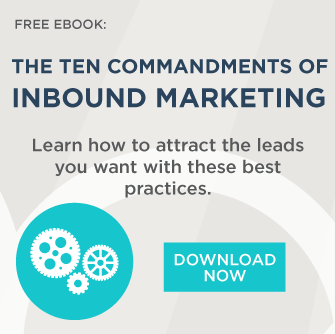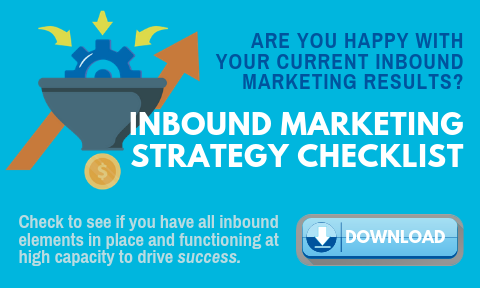The Complete Guide to SEO for B2B Businesses
SEO is one of the most critical strategies for B2B marketers. A strong SEO strategy is an excellent way to increase visibility and leads to more...


At LeadG2, we understand the value of premium SEO tools. SEO software, such as Moz, BuzzSumo, and SEMRush are excellent for scoring your site structure, content, and online authority. However, paid SEO software is not very good at estimating how much traffic your keywords are providing. But don’t be too harsh on your SEO software; it’s doing the best it can.
The truth is that there are plenty of free SEO tools that are widely used by the SEO community and offer actionable data, but only one tool on the market can accurately estimate how much traffic your keywords provide your website. Best of all, it's free and it’s known for being the most reliable location for information on how Google crawls and ranks your site.
 To paraphrase magicians at the beginning of a trick: “Pick a keyword... any keyword.”
To paraphrase magicians at the beginning of a trick: “Pick a keyword... any keyword.”
Now, what percentage of clicks go to the first three results? Some will pull articles to cite that over 75% of clicks go to the first three results. Others will shout percentages such as "50% of clicks" or "60% of clicks."
The wizened SEO at the back of the room will have the correct answer. It’s the two most famous (and aggravating) words in all of Search Engine Optimization:
“It depends.”
As an example, let’s look at the query “how to cook bacon.” According to SEMrush, this query is searched for 22,200 times each month. Moz puts the number between 11,500 and 30,300. Let’s go with SEMrush’s number and assume that there are no ads or videos on the page to steal clicks.
If you and two competitors are able to nab the top three spots, can you combine SEMrush data and the above studies to determine how much traffic the query is bringing to your sites?
Unfortunately, no. Why is that?
Let’s say for the moment that, as of yesterday, the top three ranking sites for “How to Cook Bacon” DO actually capture 75% of clicks.
However, today someone decided to play a bit of a prank on you. They change the title of your page to “How to Cook Bacon Badly.” On the Google Search Engine Result Page (SERP), this appears as the meta-title. Below it is a meta-description that is changed to read “Learn how to cook bacon with an acetylene torch.”
How many hungry bacon-lovers are going to click on that result? Surely, it won’t be as many people as yesterday. The top three results will no longer capture 75% of clicks. More likely, the fourth and fifth ranking results will see more clicks go to their website.
When you check your analytics, you will find that the query which is searched for 22,200 times per month is bringing in almost no traffic!
Google Search Console (GSC), formerly known as Google Webmaster Tools, is free software that can be added to any website you own. While it’s chocked-full of features, the most relevant one is its ability to record queries, clicks, impressions, and average rank.
Impressions refer to the amount of times that your meta-title, URL, and meta-description appeared in front of someone viewing a SERP. The number of clicks divided by the number of impressions gives you the click-through rate (CTR), the percentage of time that someone saw you on a SERP and then clicked through to your website.
So, when someone says that the top result of a SERP captures 33% of clicks, it is identical to saying the CTR of the top result is 33%.
The studies above are not wrong; they are just calculating the average CTR over many results. The problem is assuming that the average CTR will apply universally to all keywords.
Google Search Console will reveal the truth: the actual CTR of the query you are ranking for.
Does that mean that studies on average CTR for top three results of a SERP are useless? Far from it. Instead, the studies should be used to make a general point: the CTR of the top ranking results in a SERP should be significantly higher than the CTR of the bottom three results.
So, what happens when you catch that nasty prankers and the SERP goes back to normal?
Your traffic will increase.
While it's fairly easy to catch a prankster destroying your CTR for “How to Cook for Bacon,” the task becomes harder when trying to figure out whether you should optimize your un-pranked meta-titles and meta-descriptions.
There are two schools of thought when it comes to deciding whether you should optimize a meta-title or meta-description. The first is to set a hard-and-fast rule: optimize pages with a CTR below x%. The second correlates rankings with CTR. For instance, if Brian Dean’s study is accurate, a keyword with an average rank of 1 should have a CTR around 31%. However, as has been pointed out, this is only an average. It also only applies when the SERP is just 10 blue organic links. Advertisements, video carousels, featured snippets, and knowledge panels all steal some clicks.
So, if you want to correlate CTR with rankings, you need to check the SERP to ensure none of these click-stealers are around. If they are, then even the most optimized meta-title and meta-description are unlikely to reach 31%.
Whichever method you choose, Google Search Console remains a key way to increase your traffic without any complex SEO tricks. All it takes it is improving your meta-titles and meta-descriptions.

SEO is one of the most critical strategies for B2B marketers. A strong SEO strategy is an excellent way to increase visibility and leads to more...

People believe all kinds of crazy things. And just because people believe something, doesn’t mean it's true. SEO has more than its share of untrue...

An effective inbound marketing plan is essential for businesses seeking sustainable growth and increased brand visibility. Unlike traditional...